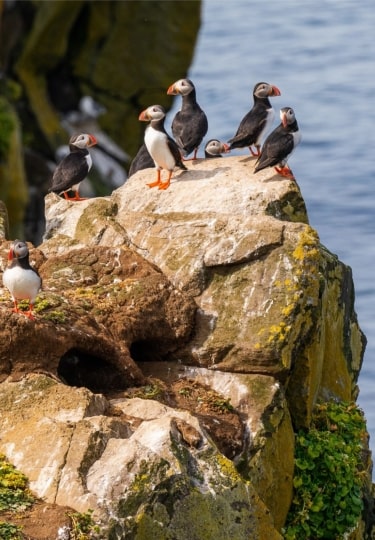Iceland in August is truly bucket-list worthy. This volcanic, Kentucky-sized island lies roughly midway between Greenland and Norway, in the middle of the North Atlantic Ocean, on the Mid-Atlantic Ridge. With mild, sometimes cool weather in August, the climate is perfect for visitors to pack in Iceland’s magnificent scenery, including mighty glaciers, deep fjords, and remote islands.
Iceland is an outdoor lover’s dream, and the wildlife is as spectacular as the scenery, with whales, puffins, and free-roaming horses. August in Iceland also delivers some wonderful fresh produce, including an abundance of wild berries. From what temperature you can expect to a big-hitting festival, here’s everything you need to know about Iceland in August.
Cool & Mild Weather
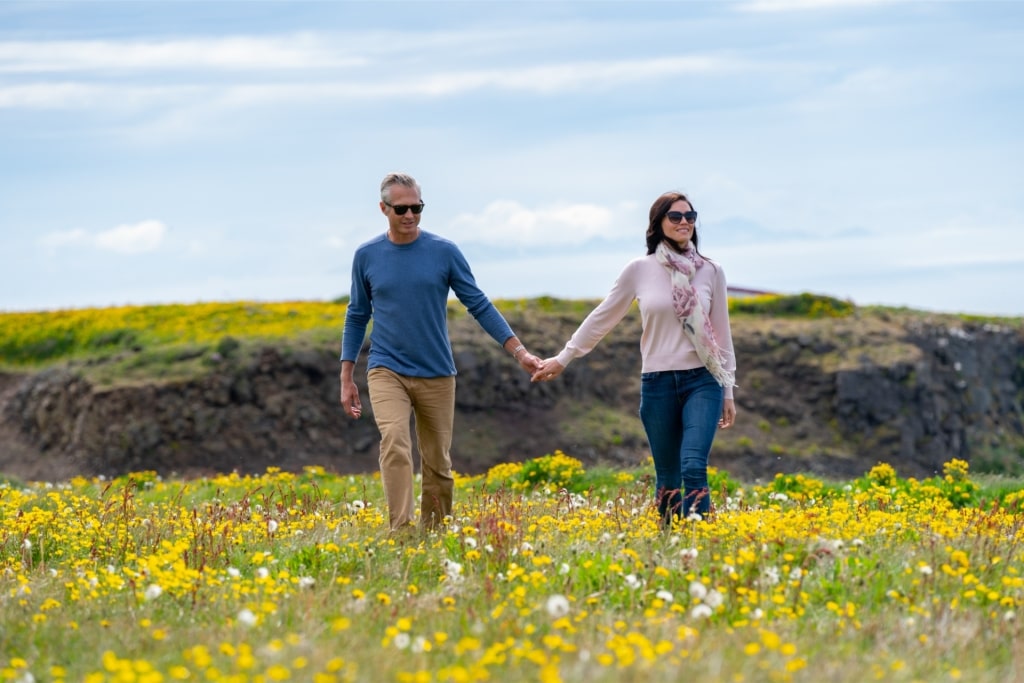
Grimsey Island
The weather in August in Iceland can be somewhat unpredictable. Some days are mild, while others are cool and crisp, especially toward the end of August, when rain is also more common.
You can also expect long hours of daylight—though less than in June and July—roughly 15 to 17 hours per day. The temperature drops as the month progresses, ranging from highs of 77°F, or 25°C to lows of 50°F, or 10°C.
When planning what to pack for Iceland, opt for comfortable activewear if your plans include hiking, kayaking, or rafting. You’ll want an outer layer of waterproofs, hiking or sturdy walking boots, and a backpack to carry your belongings when out exploring.
Wonderful Waterfalls

Gullfoss
August in Iceland is all about witnessing as many of the country’s cascading waterfalls as possible. Gullfoss is one of the country’s most famous and is easily reached from Reykjavik, located on the Golden Circle route, along with Thingvellir National Park and Geysir Geothermal Area.
This powerful, two-tier waterfall is fed from the Hvítá river and the Langjökull, Iceland’s second biggest glacier, dropping a total of 105 feet into a canyon below. There are viewing platforms, a restaurant, bathrooms, and a gift store.
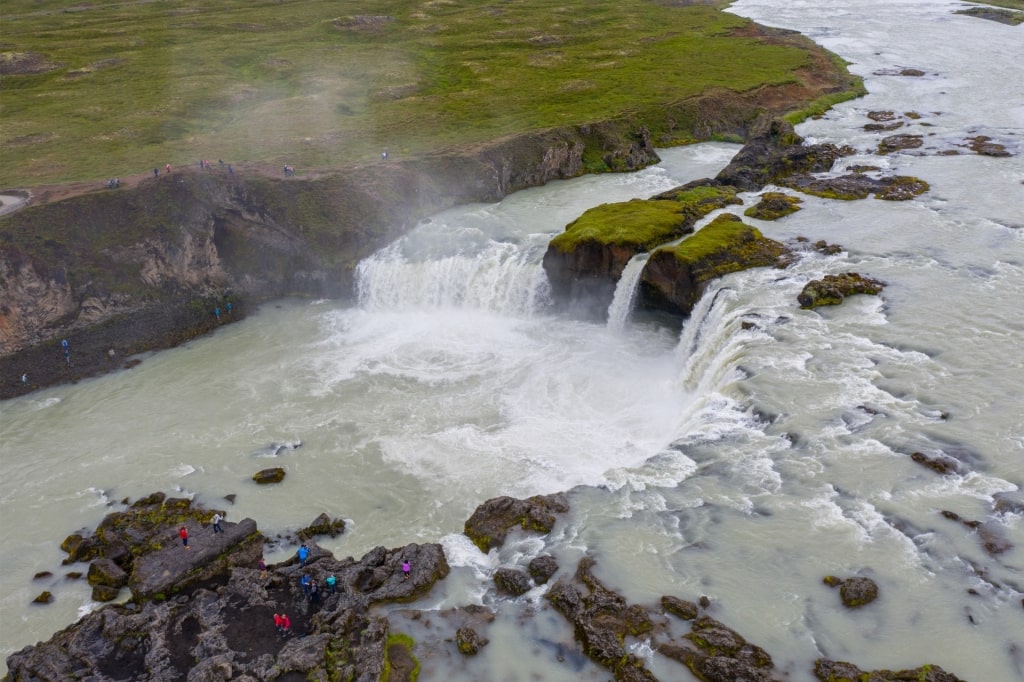
Godafoss
One of Iceland’s most beautiful places is Godafoss, a spellbinding crescent-shaped waterfall that’s a short drive from Akureyri. You could also tick off seeing Aldeyjarfoss, also near Akureyri, which drops 66 feet over towering basalt columns into an icy pool below.
Magnificent Dynjandi in Iceland’s remote Westfjords is easily reached from Isafjordur. This breathtaking, veiled waterfall starts at 98 feet at the top and widens to almost 200 feet at the bottom. Follow the path to Dynjandi’s base and you’ll take in several smaller waterfalls, too.
Dazzling Fjords
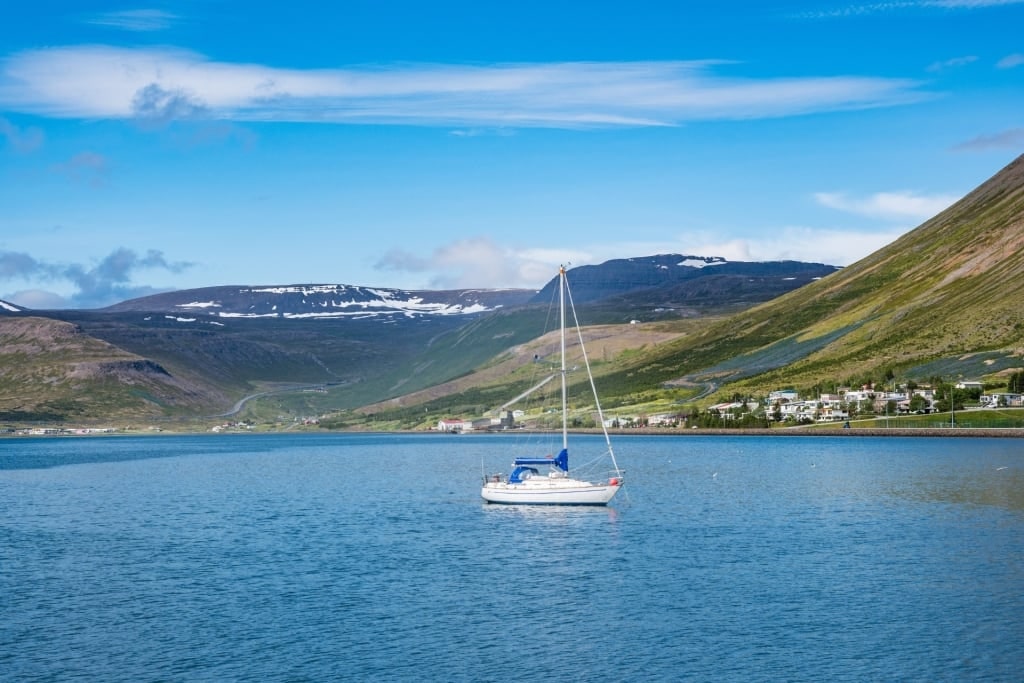
Isafjordur
Iceland is home to 109 scenic fjords, with these deep, U-shaped inlets of water reflecting the surrounding landscape of snow-capped mountains, flowing waterfalls, and attractive fishing villages.
Iceland’s fjords are clustered in the Westfjords and Eastfjords, with more dotted along the west and north coasts, making them easily accessible in August. Explore places such as Isafjordur, a pretty fishing town with traditional wooden houses, a craft brewery, hiking routes, and a summer-long boat service to Vigur Island on the Ísafjarðardjúp fjord.
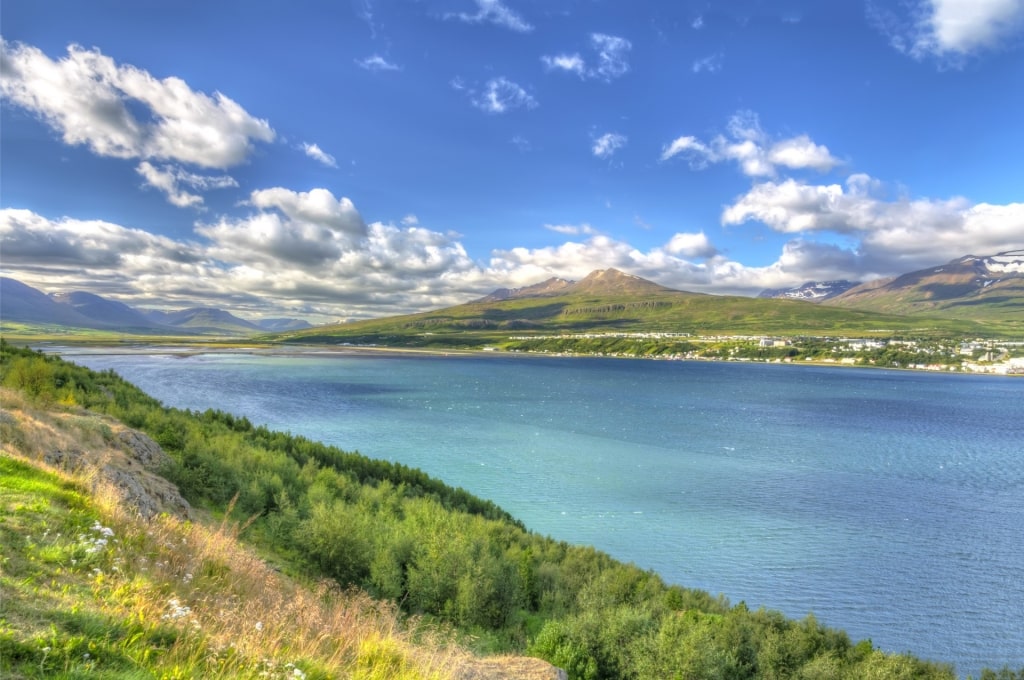
Eyjafjörður
At 47 miles, Eyjafjörður, on the north coast, is the longest fjord in Iceland. It’s dominated by the hulking, 5,046-foot Mt. Kerling, which casts a shadow over the inky water, while the city of Akureyri, with its fragrant Botanical Garden lies at the fjord’s innermost point.
You could look for bottlenose dolphins and humpback whales on a Eyjafjörður boat trip or visit the fascinating Herring Era Museum on the much smaller Siglufjörður fjord, also on Iceland’s north coast.
Some of Iceland’s best fjords for hiking are on the east coast, including the Skalanes Nature Reserve on the Seydisfjordur. Stop by the Skalanes Nature and Heritage Center to learn about traditional Icelandic fishing and organic farming methods.
Majestic Birdlife
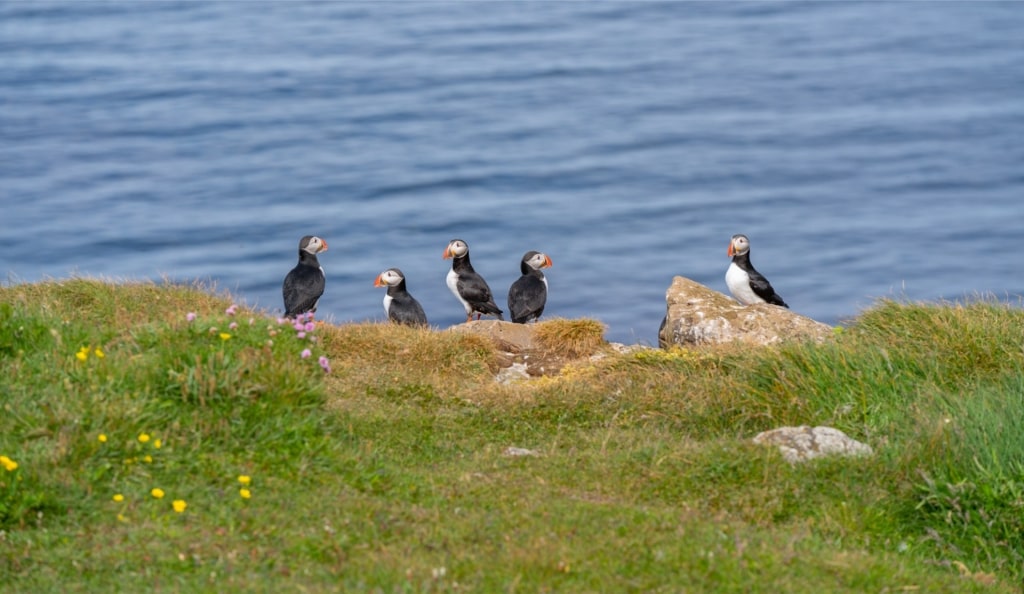
Puffins
Throngs of Atlantic seabirds congregate in Iceland during the summer months, nesting on the country’s craggy coastline, including black guillemots, razorbills, northern gannets, and great cormorants.
Atlantic puffins are naturally the most popular seabirds to see. Iceland’s puffin season is from late April to mid August, with colonies bringing thousands of these cute seabirds to burrow on cliff tops all around the country, including Dyrhólaey, on the south coast.
Look out for these magnificent birds frantically flapping their wings as they fly—they can flap up to 400 times per minute—clasping tiny translucent fish in their orange beaks.
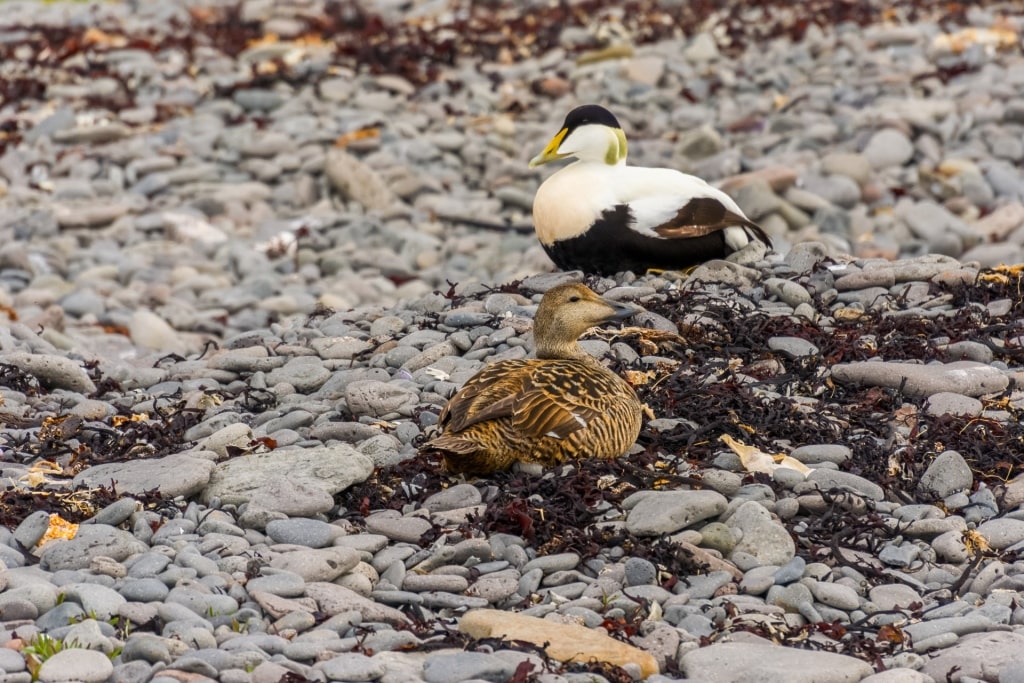
Eider duck
One of the best places to see eider ducks is on Vigur Island, reachable by boat from Isafjordur between May and September. Vigur is a family-owned island home to an eiderdown farm, with eider ducks and fledglings on the island in August.
If you’re in Reykjavik, you don’t need to venture far to see seabirds. Arctic terns, common eider, common ringed plover, and whooper swans are among the species you might witness at the picturesque Tjornin lake in the city.
Fresh Berries

Crowberries
If you’re visiting Iceland in August, prepare to savor a selection of ripe berries that are in season during this late summer period.
Prime berry-picking season sees farmers and foragers plucking a mixture of native berries, including bog bilberries, crowberries, and whortleberries, which are all similar in taste and appearance to blueberries. You’ll also be able to taste strawberries and brambleberries, also known as blackberries.
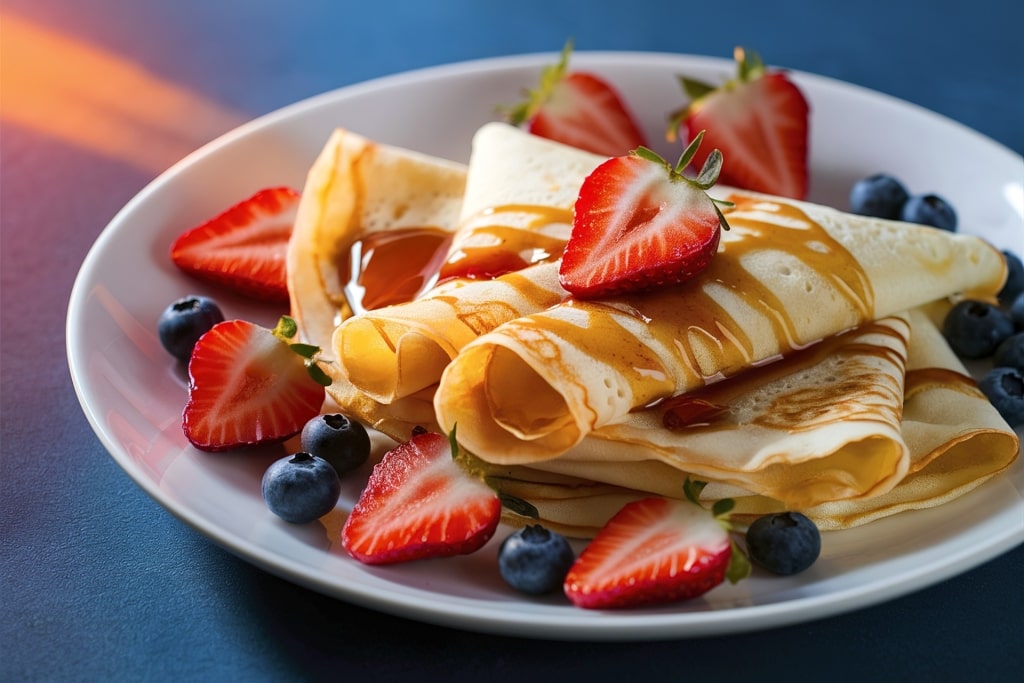
Pönnukökur
Eat berries on their own or with skyr, an Icelandic yoghurt, or in a fruit jelly smothered over waffles or pönnukökur, Icelandic crepes, with a generous serving of thick cream.
Berries are crammed with goodness, such as Vitamin C, and you could forage for your own while out on a hike. Do your research so you know exactly what you’re looking for. Though there are no poisonous berries in Iceland, avoid eating anything you’re unsure of.
Read: The Ultimate Guide to Food in Iceland
Reykjavik Pride

Skólavörðustígur
Every August since 1999, Iceland’s capital has celebrated its LGBTQ+ community at Reykjavik Pride. This much-loved festival has grown from around 1,500 attendees to over 100,000 guests from around the world.
Reykjavik Pride’s vibrant program features open-air concerts, parties, and a street parade that covers Tækniskólinn next to Hallgrímskirkja church, Skólavörðustígur, Bankastræti, and Lækjargata, before concluding on Fríkirkjuvegur with a closing ceremony.
The pedestrian Skólavörðustígur—also known as Rainbow Street—is painted in vibrant pride colors to celebrate the LGBTQ+ community and is now a permanent fixture in the city.
The event labels itself as the world’s biggest small pride festival and is now Iceland’s largest event. Check the program ahead of your visit and join in with the wonderful festivities.
Cetaceans
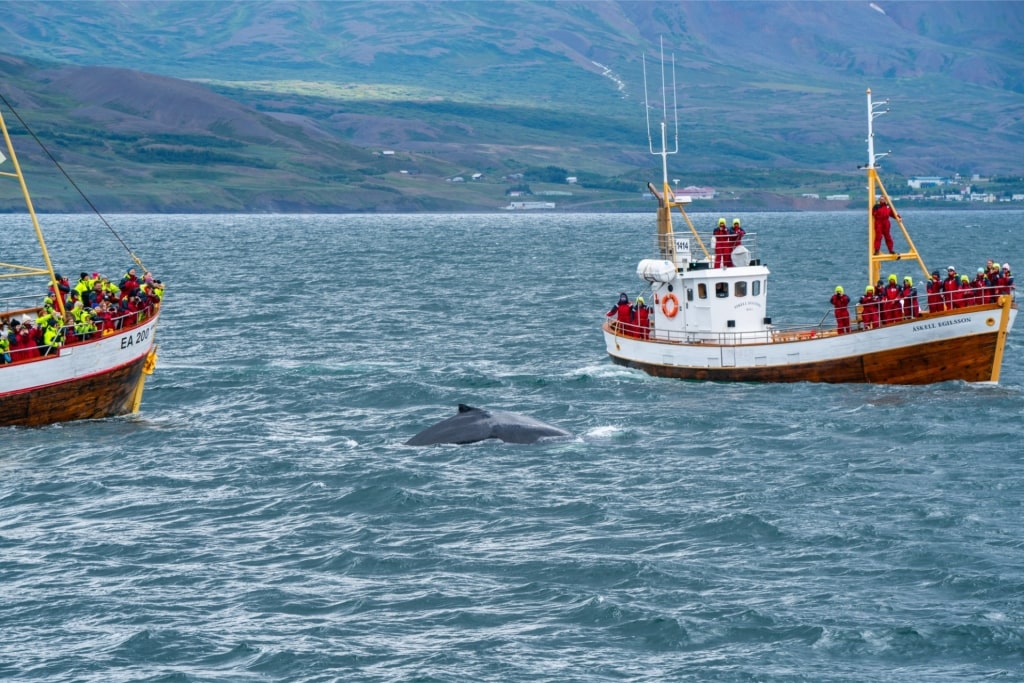
Whale watching in Akureyri
Cetaceans are plentiful in Icelandic waters in August, including humpbacks and minke whales, porpoises, and dolphins. While there is never any guarantee of seeing them, wildlife watching tours offer a strong chance and depart regularly from Reykjavik and Akureyri.
Join a guided boat trip on the Eyjafjörður from Akureyri in search of tail-slapping humpbacks, gliding orca, and fin whales. You might also get lucky and spot blue whales, sperm whales, or narwhals.
Dress in warm, waterproof clothing on a whale watching trip. Even if the forecast is warm and sunny, conditions can change quickly in Iceland so it’s better to be prepared.
River Rafting

River rafting in Iceland
August presents one of the best opportunities of the year to go river rafting, before the water and air temperatures become too cold.
One of the best places to go river rafting in Iceland is on the glacial Hvítá, which translates as White River, located on the Golden Circle route. Downstream from the mighty Gullfoss waterfall is a gentle swathe of the river that offers cinematic Brúarhlöð canyon scenery.

River rafting in Iceland
Join a guided river rafting trip, with most open to all levels, including beginners. This class 2 river offers a moderate level of rough water, with some rocks, drops, and some maneuvering involved.
Prepare to get wet—very wet—but also know that you’ll have an enormous amount of fun and tons of wonderful memories to take home after experiencing one of the best things to do in Iceland in August.
Kayaking & Canoeing
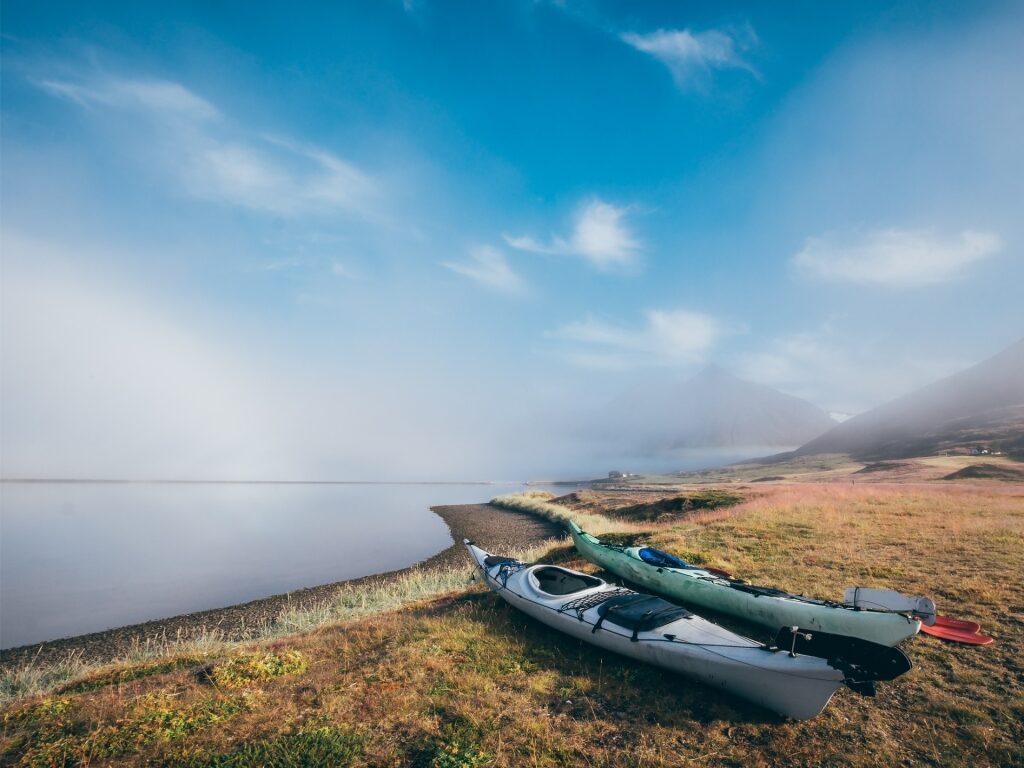
Kayaks in Iceland
August is also an ideal time to try kayaking or canoeing in Iceland. You could opt for the open ocean, a calm fjord, or a winding river to get up close to Iceland’s spectacular scenery.
A guided kayak tour is your best bet, so you can rent your equipment and follow a knowledgeable guide on a thrilling paddle. Kayak trips are available from Isafjordur in the Westfjords, where you can enjoy a front row seat of the region’s misty mountains and soaring cliffs.
Your guide will be able to steer you in the right direction to look for seals, dolphins, puffins, and whales as you glide along the deep fjord, while regaling you with folklore tales.
Similarly, you could head to charming Stykkisholmur on the north coast of the Snæfellsnes Peninsula—around two and a half hours’ drive north of Reykjavik—to take in the remarkable beauty of Breiðafjörður Bay from the water. Sea kayaking tours operate from the fishing harbor with a strong chance of spotting puffins, eider ducks, and even a white-tailed eagle, swooping above the sea.
Grimsey Island
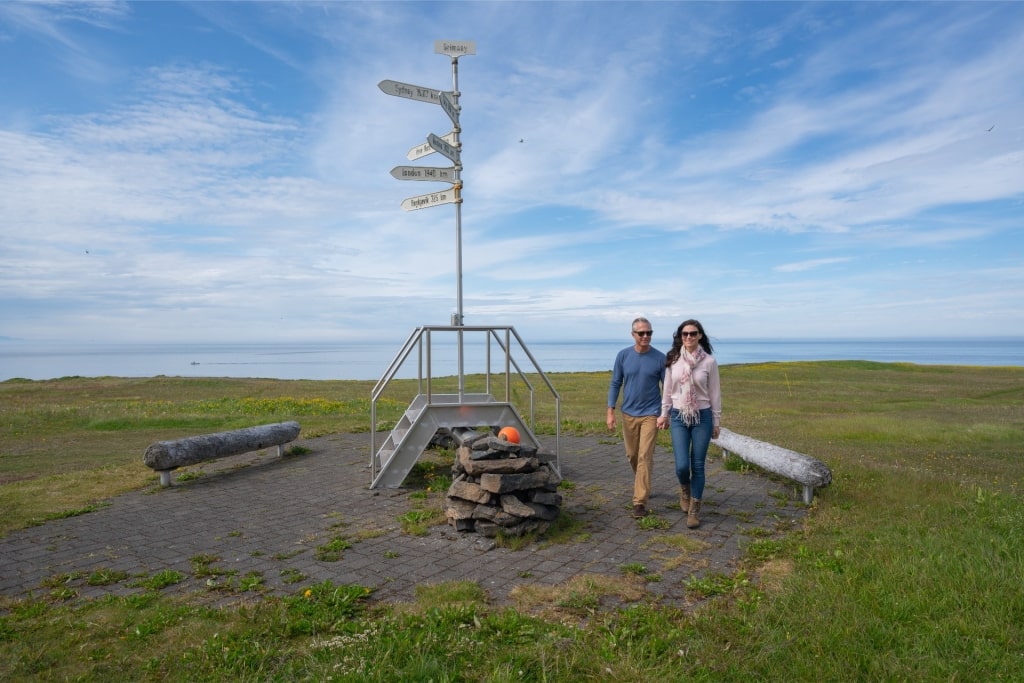
Grimsey Island
Grimey is a small, remote island lying 20 nautical miles off of the north coast of Iceland on the edge of the Arctic Circle. The island rises from the wild north Atlantic waters, with 300-foot-high sea cliffs home to a plethora of bird life, while native Icelandic horses roam on the green-covered land.
August is a great time to visit, before the island becomes dusted in snow later in the year. Puffins tend to stay around until mid August, before they migrate back to sea, though even when they’ve left their burrows, you might spot them bobbing in the ocean.
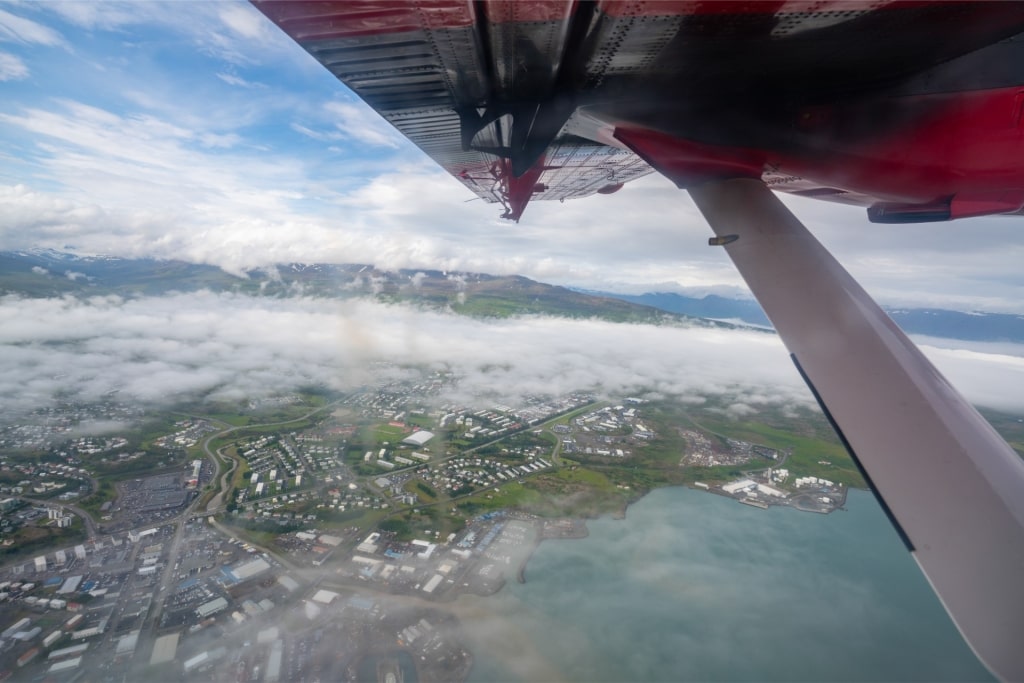
Flightseeing from Akureyri
Getting to Grimsey Island involves a thrilling flight from Akureyri, which will give you a bird’s-eye view of this faraway land before landing on the island’s small airstrip.
There’s a gift store selling gorgeous Icelandic knits and a café where you can fuel up on muffins, sodas, and hot drinks before setting off on a hike of the island. Grimsey is roughly two square miles, though there is some uneven and hilly terrain, making it a moderate hike overall.
Make your way to the Arctic Circle marker. Called the Orbis et Globus and located at the northern end of the island, this art installation is functional, too, since it tracks the movement of the Arctic Circle. The full loop is 3.7 miles. You’ll want to allow time for the many photo opportunities along the way.
Read: Best Hikes in Iceland
Flowering Harebells
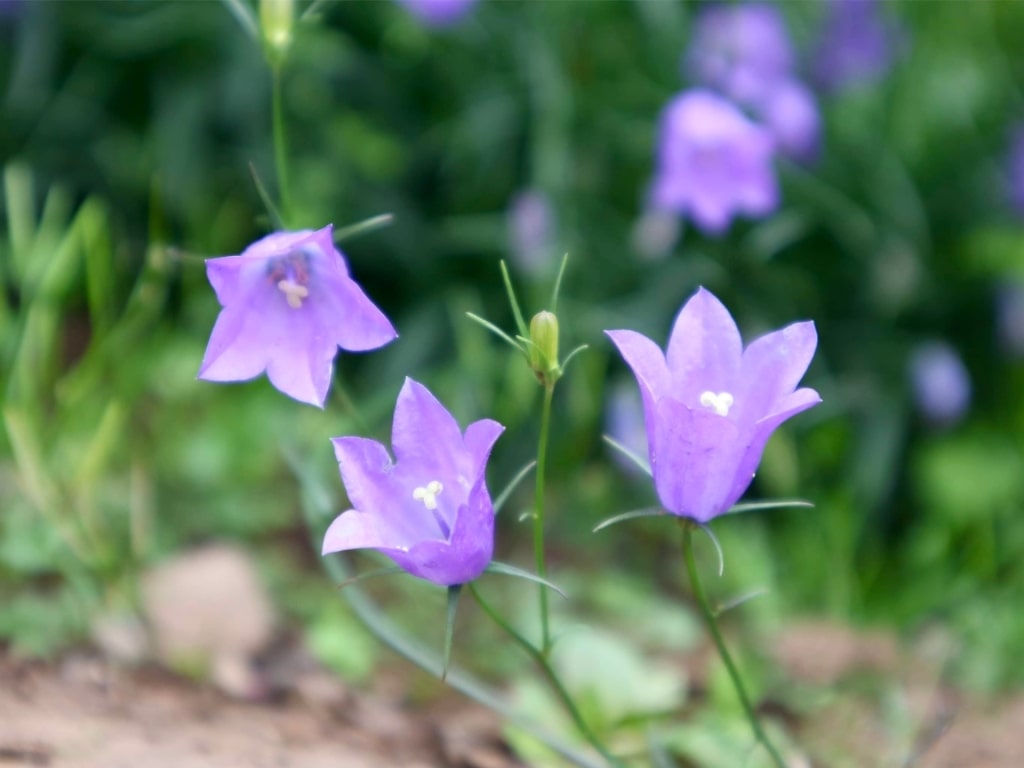
Harebells
Trees might not be common in Iceland, but wildflowers in summertime are, including this violet-hued species that blooms in August.
Typically growing in the east and south, harebells have a bell-shaped flower and are similar in appearance to bluebells. These pretty flowers, known as bláklukka in Icelandic, can be seen in the grassy meadows that skirt the Eastfjords.
Central to the Eastfjords is Seydisfjordur, a tiny fishing hamlet, surrounded by snow-capped mountains and grassy meadows. There are plenty of walking routes that may lead you to flowering harebells. Try the trail along the north of the fjord from Seydisfjordur to the multi-tiered Vestdalsfossar waterfall.
Around 10 miles from Seydisfjordur, Skalanes Nature Reserve, boasts more than 150 types of plant life that thrives during summer in Iceland, including purple lupine.
Black Sand Beaches

Reynisfjara Beach
Vast, black-sand beaches unfurl along Iceland’s dramatic coastline. Check them out in August when you could witness powerful waves hitting Reynisfjara Beach, Iceland’s most famous volcanic beach, in the south, located near the town of Vik.
The tallest wave recorded here reached 120 feet, the height of a 10-story building. Explore the black-sand shore while keeping a safe distance from the water and gaze at the basalt columns and rugged sea stacks.
If you’re visiting the Blue Lagoon geothermal baths or the symbolic Bridge Between Continents—a bridge representing Iceland’s location on the Mid-Atlantic Ridge—stop by the black-sand Sandvik Beach. This dramatic spot is surrounded by moss-covered lava fields on the tip of the Reykjanes Peninsula.
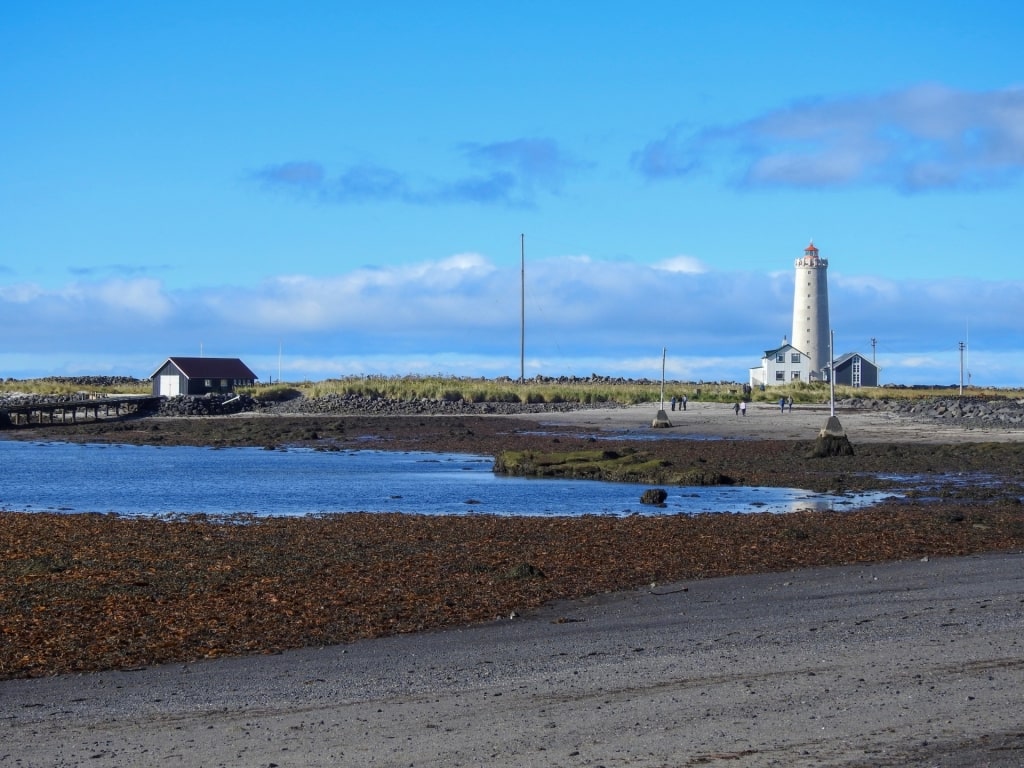
Grotta Nature Reserve
If you prefer to stay near Reykjavik, Grotta Nature Reserve, just a few miles from the city center has a small black-sand beach near Grótta Island Lighthouse on the Seltjarnarnes Peninsula. Seals can sometimes be spotted lazing by the beach and Arctic terns can be found dive-bombing along the shore.
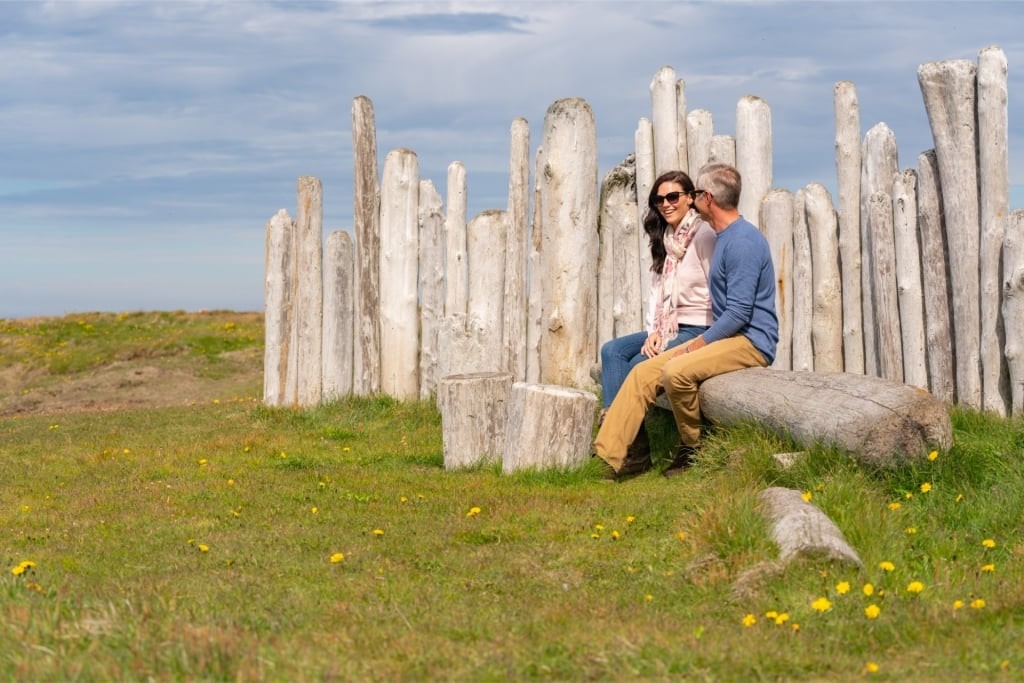
Grimsey Island
Inspired to book your next unforgettable vacation to one of the world’s most breathtaking countries? Check out Celebrity’s cruises to Iceland to explore destinations including Reykjavik, Akureyri, Isafjordur, and Seydisfjordur.
